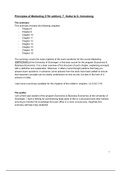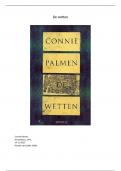Samenvatting
Summary Exam Material Marketing Year 1 Endterm EBE
- Instelling
- Rijksuniversiteit Groningen (RuG)
A detailed summary of the chapters for the endterm of the course Marketing for E&BE. The chapters 8, 9, 10, 11, 12, 14, 15, 16 and 19 are included. I also have a summary available with the chapters for the midterm (chapters 1,2,3,5,6,7,18), if you need those as well.
[Meer zien]







